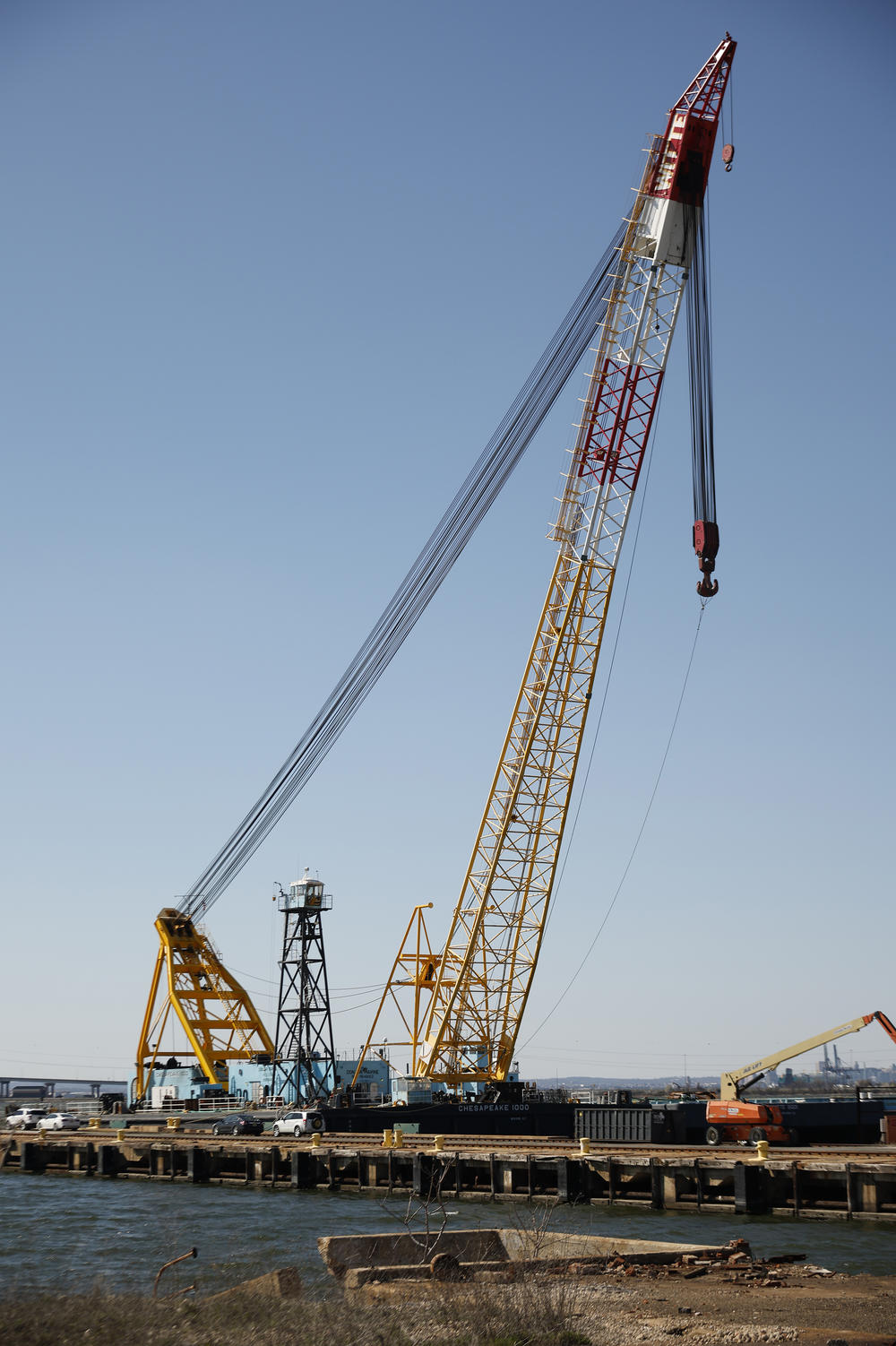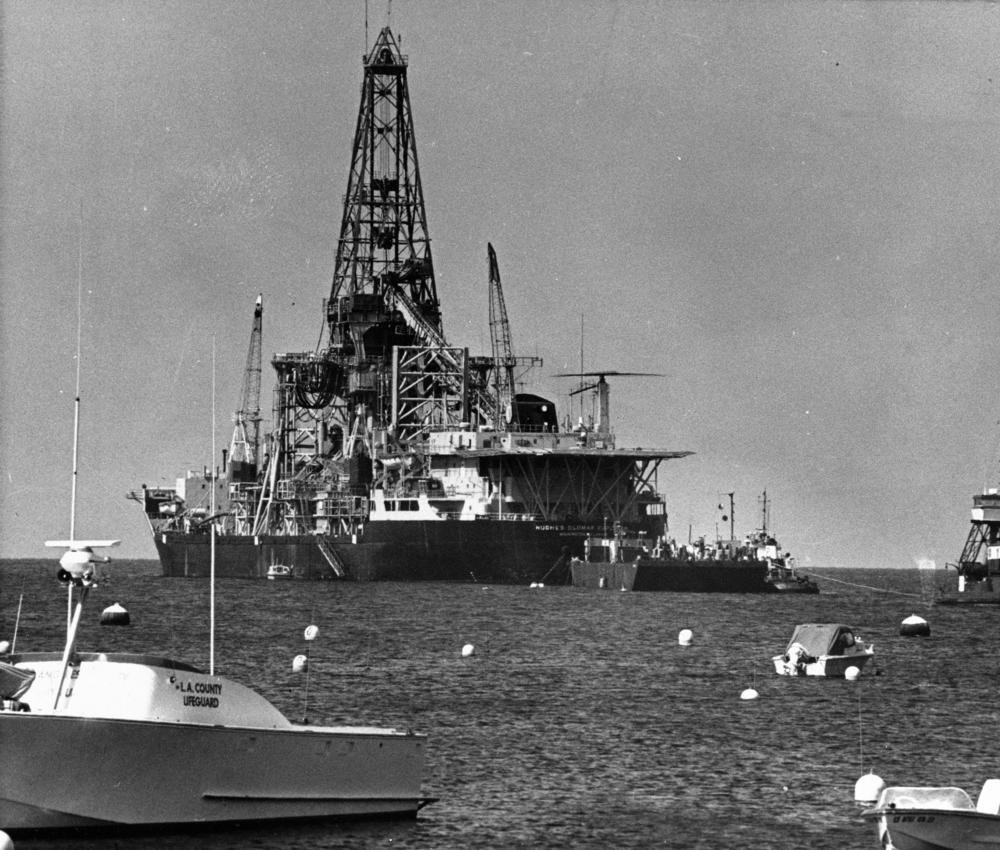Section Branding
Header Content
A huge crane with a CIA history helps with the Baltimore bridge cleanup
Primary Content
Cleanup efforts continue after last week's fatal collapse of the Francis Scott Key Bridge in Baltimore. At the center of the wreckage removal is a massive decades-old crane – the largest on the East Coast.
"Picture essentially a giant floating crane on a barge. And the proportions of this are really difficult to describe or to fathom," Transportation Secretary Pete Buttigieg told All Things Considered last week.
The crane is called the Chesapeake 1000, named for the 1,000 tons it can lift. Its nickname is "Chessy," and because of its sheer size, it has held many prominent jobs over the decades.
That includes a secret CIA mission during the Cold War.
In 1968, U.S. intelligence discovered a sunken Soviet submarine in the middle of the Pacific Ocean. To recover the sub, without the Soviets knowing, the U.S. needed a new deep sea ship.
And to build that ship, they needed a huge crane. That was Chessy's first mission.
"It was thought that there was at least one nuclear weapon aboard the sub," says Todd Bennett, an associate professor of history at East Carolina University. "And even more importantly, the portion of the sub that the CIA targeted contained a code room, a working code machine and then materials it was thought that explained how that device worked."
Bennett said the design of the recovery ship was unusual and not what you would expect for a deep ocean mining vessel. That is in large part because the ship had to hide in plain sight.
"A cover story was really essential and the agency went through a number of options, but finally settled on having the reclusive billionaire Howard Hughes pose as the owner of this ship," Bennett said. The ship was named the Hughes Glomar Explorer, after Hughes.
"Hughes was chosen for a number of reasons, but mainly because he was secretive. His firm was privately owned. There were no SEC reports to file. And so Hughes' organization was thought to be the perfect black box."
The mission was partially successful after two recovery attempts, but then its cover was blown after an unauthorized leak. The CIA did not officially confirm the mission until 2010, through a partially redacted report.
Bennett says the fact that the crane is in the news again is a testament to the technical complexity of that early intelligence operation.
"This incredible machine and the things that helped build it, they also have such a large scope, such an incredible scale that they continue to have use today in helping to clear the tragic Baltimore bridge collapse," he said.
The U.S. Army Corps of Engineers released a plan Wednesday outlining its path forward for analyzing the wreckage and clearing the Patapsco River, saying the "situation remains dynamic" and the timeline will continually evolve as they learn more.



